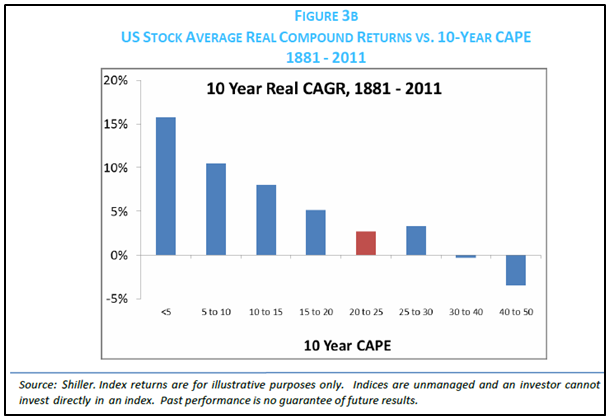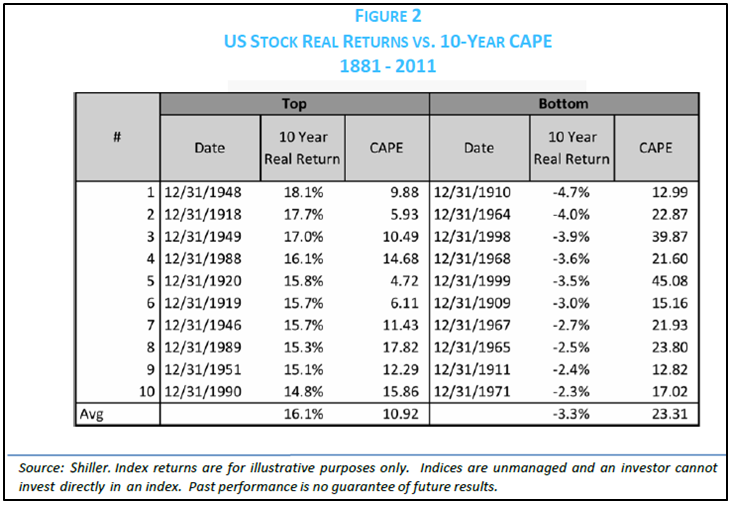Stock Prices, Earnings, and Expected Dividends
- Campbell and Shiller
- A version of the paper can be found here.
- Want a summary of academic papers with alpha? Check out our Academic Research Recap Category.
Core Idea:
Price-earnings ratios and dividend-price ratios are useful for forecasting future stock price changes.
- The core premise is that valuation ratios will fluctuate within their historical ranges in the future; when a ratio is at an extreme level, it will mean revert, and either the numerator or the denominator are forecastable.
- Dividend-price ratios are a poor predictor of future dividend growth (R-square = 0.25%); however, dividend-price ratios are a much stronger predictor of future real price changes (R-square = 63%).
- Price-smoothed-earnings ratios also have special significance.
Alpha Highlight:
Faber (2012) applied this valuation metric across more than 30 foreign markets and finds it both practical and useful. Below are two charts from Faber (2012).

The results are hypothetical results and are NOT an indicator of future results and do NOT represent returns that any investor actually attained. Indexes are unmanaged, do not reflect management or trading fees, and one cannot invest directly in an index. Additional information regarding the construction of these results is available upon request.

The results are hypothetical results and are NOT an indicator of future results and do NOT represent returns that any investor actually attained. Indexes are unmanaged, do not reflect management or trading fees, and one cannot invest directly in an index. Additional information regarding the construction of these results is available upon request.
About the Author: Wesley Gray, PhD
—
Important Disclosures
For informational and educational purposes only and should not be construed as specific investment, accounting, legal, or tax advice. Certain information is deemed to be reliable, but its accuracy and completeness cannot be guaranteed. Third party information may become outdated or otherwise superseded without notice. Neither the Securities and Exchange Commission (SEC) nor any other federal or state agency has approved, determined the accuracy, or confirmed the adequacy of this article.
The views and opinions expressed herein are those of the author and do not necessarily reflect the views of Alpha Architect, its affiliates or its employees. Our full disclosures are available here. Definitions of common statistics used in our analysis are available here (towards the bottom).
Join thousands of other readers and subscribe to our blog.

